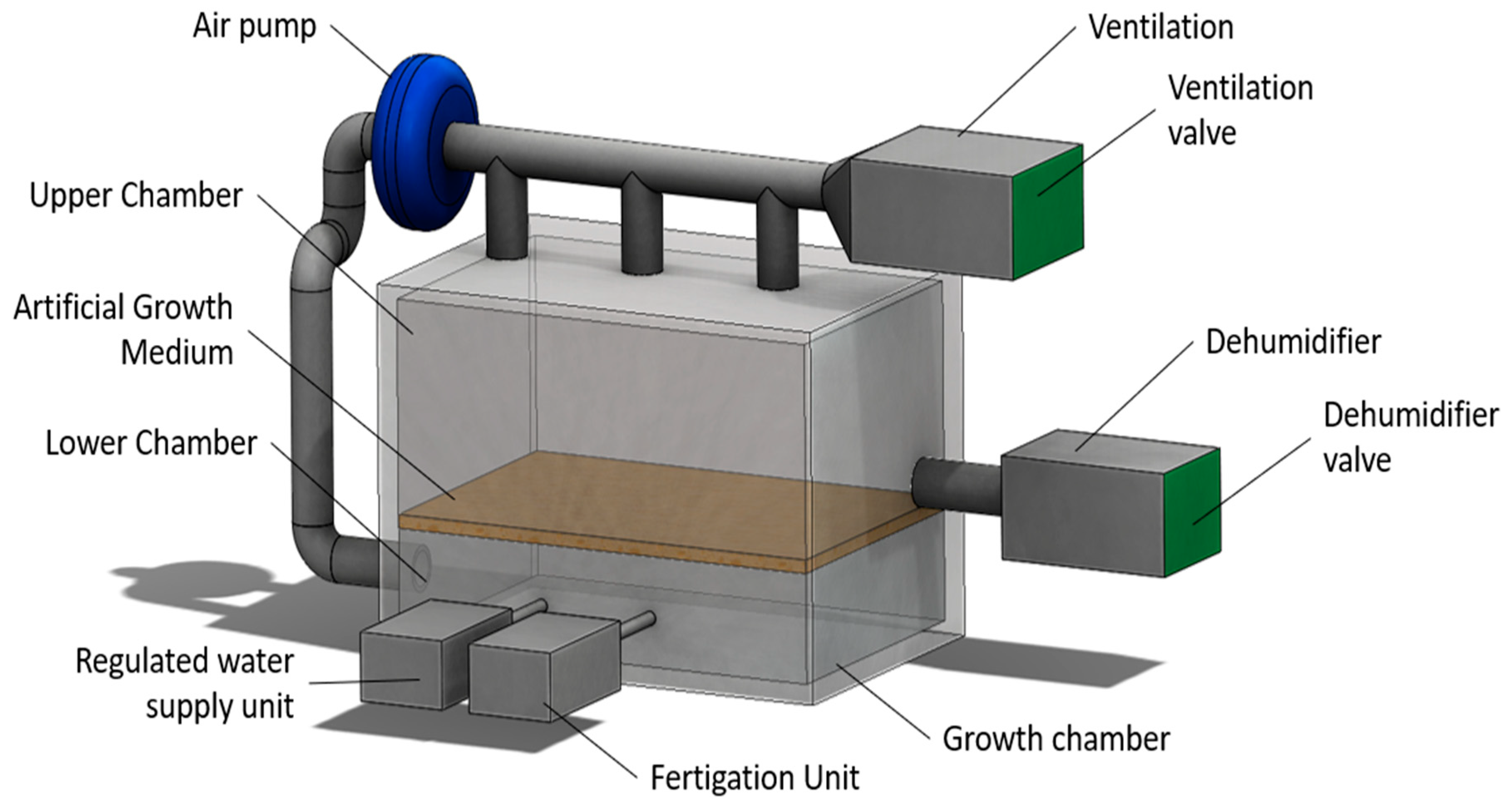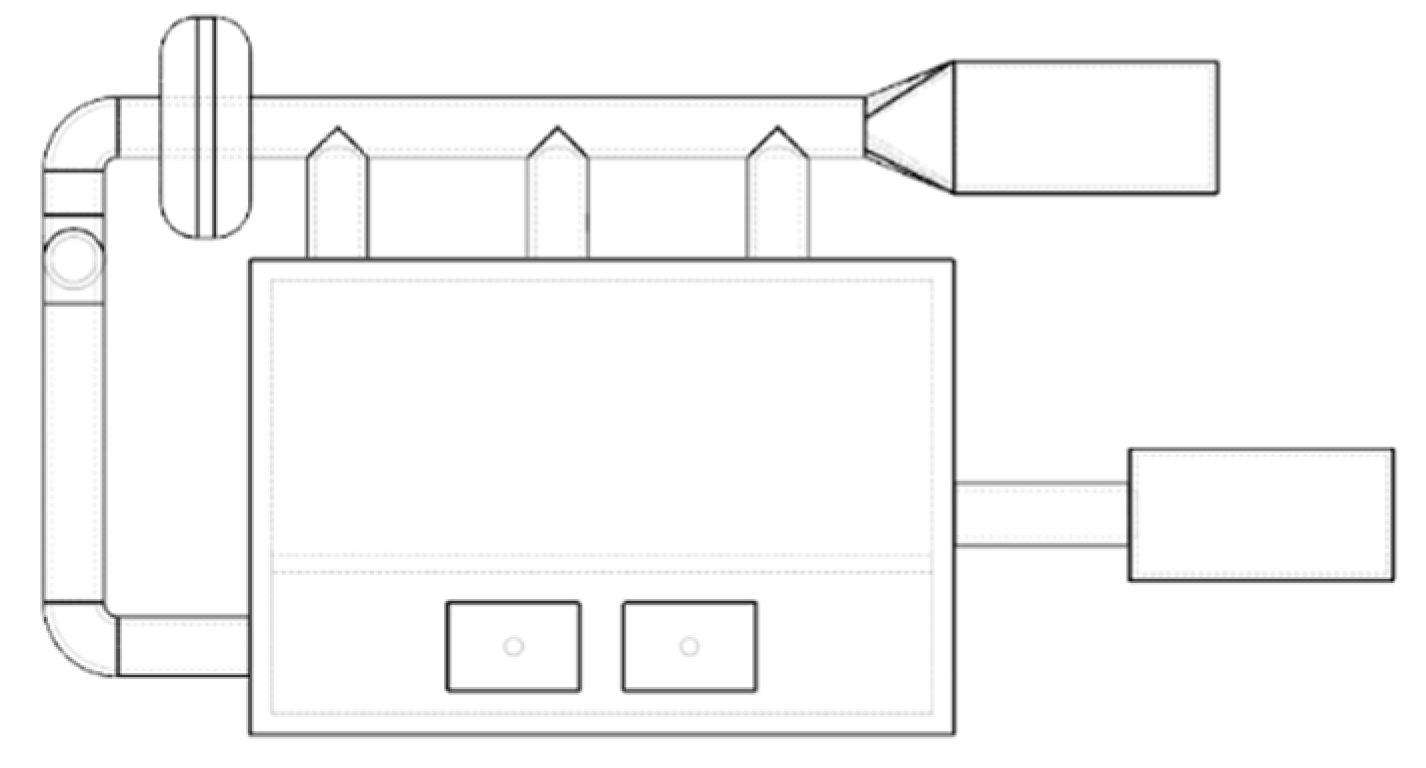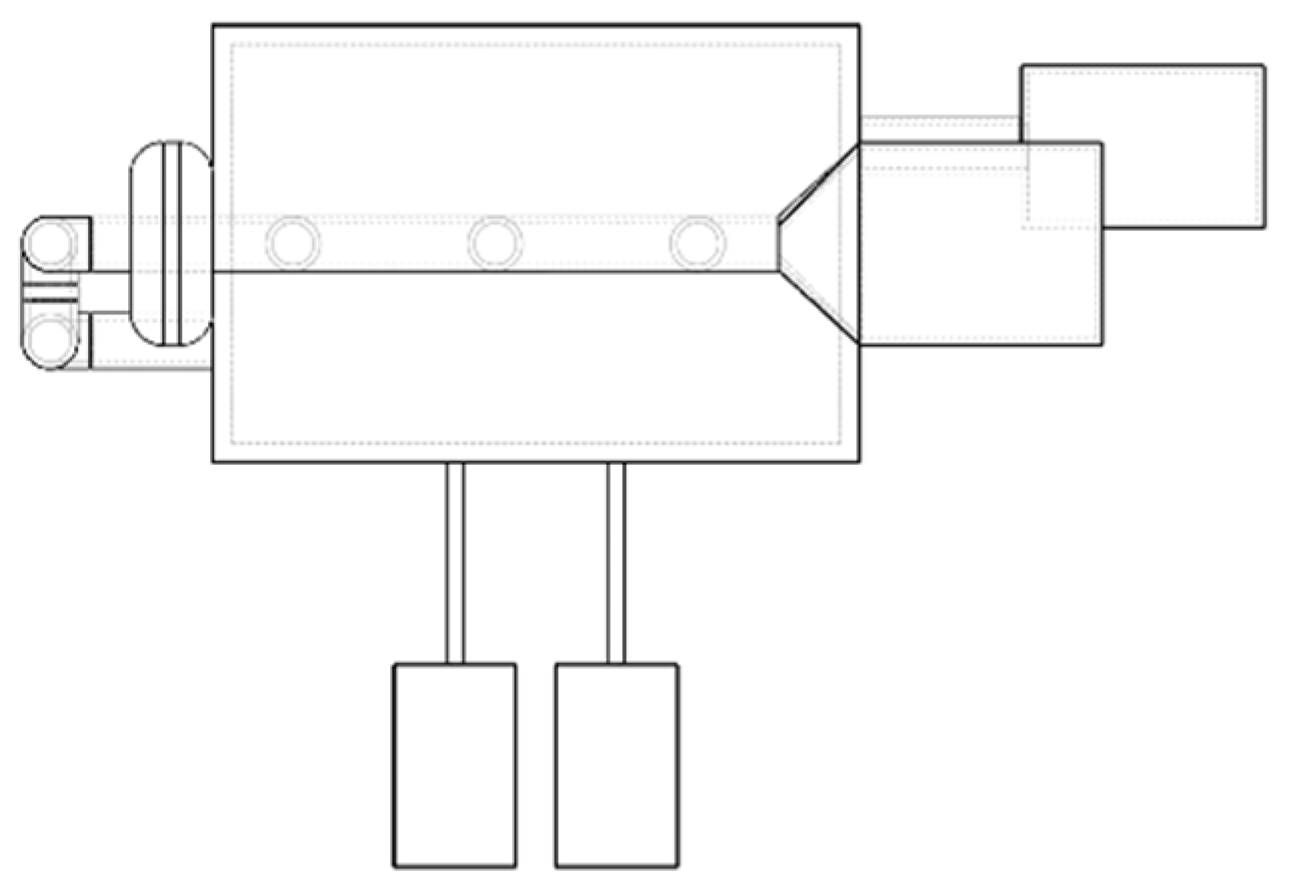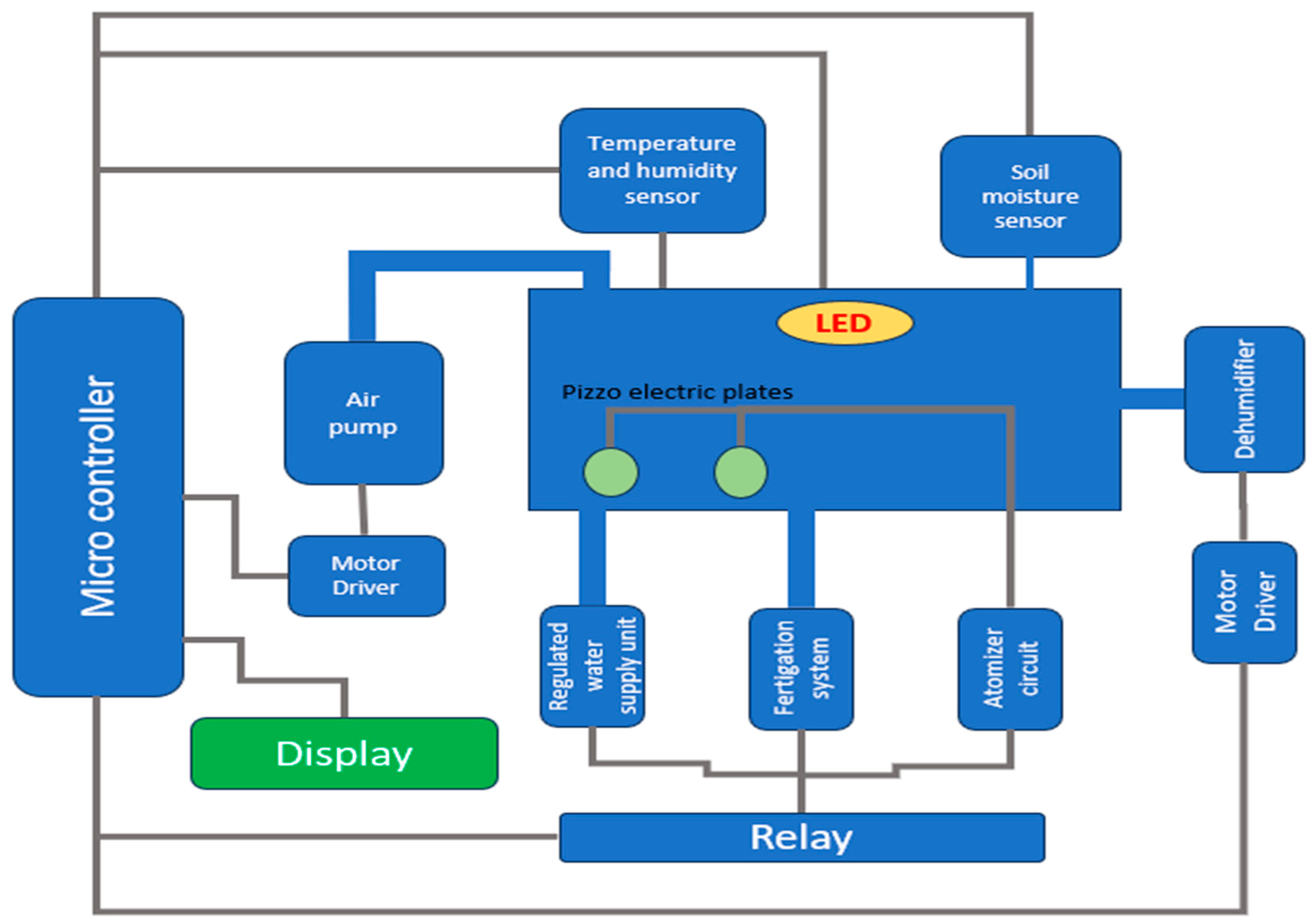Submitted:
31 December 2023
Posted:
02 January 2024
You are already at the latest version
Abstract
Keywords:
Introduction
- Veggie Plant Growth System (Ongoing): The Veggie Plant Growth System has been in operation on the International Space Station (ISS) since its installation in 2014. Ongoing experiments within Veggie continue to contribute to our understanding of microgravity plant growth, with periodic updates and new insights emerging regularly.
- Advanced Plant Habitat (APH) on the ISS (Ongoing): The Advanced Plant Habitat has been active on the ISS since its deployment in 2017. Continuous experiments within APH provide a long-term dataset on plant responses to microgravity. Research efforts in this facility contribute to evolving technologies and methodologies for supporting plant growth in space.
- Space Greenhouse Experiments (Ongoing): Ground-based space greenhouse experiments have been conducted over the past decade, with ongoing efforts to refine techniques and systems for plant cultivation in simulated microgravity conditions. These experiments are part of an iterative process to improve the efficiency and reliability of space agriculture technologies.
- Biomass Production in Microgravity (Ongoing): Research focused on biomass production in microgravity has been ongoing for several years, with experiments conducted in parabolic flight campaigns and ground-based facilities. These experiments contribute to a growing body of knowledge, and advancements are expected to continue in the coming years.
Parameters
- Temperature Control: Optimal Growth Temperature: Maintaining a stable and optimal temperature range is essential for plant growth. The Microgravity Plant Habitat regulates temperature to create a conducive environment for germination, growth, and reproduction.
- Humidity Levels: Relative Humidity: Controlling humidity levels is vital to prevent excessive moisture loss or accumulation. The Microgravity Plant Habitat carefully manages relative humidity to create a balanced atmosphere for plant development.
- Nutrient Delivery: Hydroponic Systems: The Microgravity Plant Habitat often employs hydroponic systems for nutrient delivery. These systems ensure that plants receive the necessary minerals and nutrients required for their growth, as soil-based systems are impractical in microgravity.
- Lighting Conditions: LED Growth Lights: In the absence of natural sunlight, the Microgravity Plant Habitat relies on specialized LED growth lights to provide the optimal spectrum of light for photosynthesis. These lights are programmable to simulate day and night cycles.
- Gas Composition: Oxygen and Carbon Dioxide Levels: Maintaining the right balance of oxygen and carbon dioxide is critical for photosynthesis. The Microgravity Plant Habitat carefully monitors and adjusts gas composition to support plant respiration and growth.
- Watering Systems: Automated Watering: In microgravity, traditional watering methods are impractical. Automated watering systems within the Microgravity Plant Habitat ensure controlled and precise delivery of water to the plant roots.
- Microgravity Simulation: Centrifuge Systems: To simulate microgravity conditions on Earth, the Microgravity Plant Habitat may utilize centrifuge systems. These systems create a microgravity-like environment, allowing scientists to study plant growth under conditions similar to those in space.
- Monitoring and Data Collection: Sensors: Various sensors are integrated into the Microgravity Plant Habitat to monitor environmental parameters, plant growth, and overall system performance. Real-time data collection enables scientists to make informed adjustments to optimize plant growth.
- Plant Species and Varieties: Selection Criteria: The choice of plant species and varieties is crucial. Scientists carefully select plants that can thrive in microgravity conditions and contribute to a sustainable life support system.
Problem Statement
- Uneven Water Distribution: The lack of gravity makes it difficult to direct water to specific areas, resulting in uneven distribution.
- Formation of Floating Water Clusters: Water droplets may cluster together in microgravity, forming floating water clusters.
- Limited Soil Absorption: In microgravity, the absence of this gravitational pull may limit the natural process of soil absorption, further complicating the delivery of water to plant roots.
Experimental Setup
Even Distribution of Water
- Two-Chambered Module: The growth module is designed with two chambers, separated by a layer of artificial medium positioned on a mesh. This physical division ensures a distinct upper and lower section within the module.
- Regulated Water Supply Unit: A specialized water supply unit is employed to deliver water into the lower chamber of the module. This unit is equipped with precision controls to regulate the amount and frequency of water supply.
- Piezo Electric Plate: Within the lower chamber, a piezo electric plate is installed. This plate vibrates at a fixed frequency, causing the supplied water to break into fine droplets or mist. This transformation of water into mist is a crucial step in facilitating efficient absorption by plant roots.
- Circulation System: A circulation system is integrated into the module to create a controlled airflow. This system pulls air from the upper portion of the chamber and channels it down into the lower chamber where the mist is generated. This circulation of air ensures the upward movement of fine water droplets.
- Artificial Medium Layer: The artificial medium layer, positioned on the mesh separating the two chambers, plays a pivotal role in water absorption. As the fine water droplets move upward with the circulating air, they reach the artificial medium layer. Here, the droplets are efficiently absorbed into the medium, creating a reservoir for plant use.
- Efficient Water Utilization: The trapped water within the artificial medium serves as a readily available and evenly distributed water source for plant roots. This innovative system optimizes water utilization, ensuring that each plant within the module receives a consistent and regulated supply.
- Uniform Water Distribution: The combined action of the piezo electric plate, circulation system, and artificial medium layer results in the uniform distribution of water throughout the module. This approach addresses the challenge of uneven water distribution in microgravity, providing an effective solution for sustaining plant growth.



Artificial Planting Medium
- Foam Layers: The artificial medium comprises two layers of foam, serving as the top and bottom boundaries of a specialized planting structure. Foam is chosen for its lightweight nature and versatility. The minute pores in the foam play a critical role in facilitating the movement of water droplets through the layers.
- Sphagnum Moss Layer: Positioned in the middle of the foam layers, a layer of sphagnum moss acts as the central element of the planting medium. This moss layer serves multiple functions, including water retention and absorption. Sphagnum moss is known for its high-water absorption capacity, making it an ideal component for a microgravity planting medium.
Regulated Water Supply Unit

Air Circulation and Ventilation
Humidity Control
Expected Outcomes
- Microgravity Veggie Cultivation: The module enables successful cultivation of vegetables in microgravity conditions, particularly in space stations. Provides a controlled environment for plant growth, addressing the challenges posed by the absence of gravity.
- Cost Reduction for Space Missions: Contributes to cost reduction for space missions by establishing a sustainable source of fresh food within the space station. Reduces the dependency on Earth-based supply missions for certain food items, lowering overall mission costs.
- Resource Conservation: Significantly saves important resources by creating an in-situ food production system. Limits the need to transport large quantities of perishable food items from Earth, conserving valuable resources such as fuel and cargo space.
- Long-term Sustainability: Enhances the long-term sustainability of space missions by providing a continuous source of fresh and nutritious food for astronauts. Reduces the logistical challenges associated with resupplying food from Earth over extended mission durations.
- Scientific Advancements: Contributes to scientific advancements in space agriculture and microgravity plant growth research. Provides valuable data and insights for future space missions, including those aimed at establishing human habitats on the Moon, Mars, or beyond.
- Space Habitability Improvement: Improves the habitability of space stations by introducing a bioregenerative system that supports both plant growth and human life. Creates a more holistic and self-sustaining environment for astronauts during their missions.
- Bioregenerative life support system: This will allow us advance in the technology of life support system. This type of life support system will help in the establishment of colonies at extraterrestrial habitat.
Implications
- Advanced Irrigation: Develop microgravity-specific irrigation systems for targeted water delivery to plant roots.
- Hydroponics Optimization: Implement and optimize soil-less hydroponic systems for efficient space-based agriculture.
- Capillary Action: Explore capillary action mechanisms to guide water movement in the absence of gravity, ensuring even distribution.
- Water Recycling: Integrate water recycling systems for sustainable resource management in space habitats.
- Smart Sensors: Deploy real-time smart sensors to monitor soil moisture and plant hydration, optimizing water delivery.
- Aeroponics Investigation: Research aeroponics techniques for controlled water and nutrient delivery in microgravity.
- Gravity Simulation: Use gravity simulation devices to create localized gravitational conditions for specific plant growth areas.
- Adaptive Plant Varieties: Cultivate plant varieties adaptable to microgravity, ensuring success in altered water supply environments.
- Collaborative Research: Foster collaboration among space agencies, research institutions, and private companies for accelerated water management solutions.
- Continuous Testing: Continuously iterate and test water supply systems to address challenges and optimize performance in space missions.
References
- PLANT RESPONSES TO GRAVITY - INSIGHTS AND EXTRAPOLATIONS FROM GROUND STUDIES Karl H. Hasenstein Biology Department, University of Louisiana, Lafayette, LA.
- Plant Growth and Morphogenesis under Different Gravity Conditions: Relevance to Plant Life in Space Takayuki Hoson Life 2014, 4, 205-216. [CrossRef]
- Growing Plants for NASA — Challenges in Lunar and Martian Agriculture© Fred T. Davies, Jr., Chunajiu He, Ronald E. Lacey, and Que Ngo Departments of Horticultural Sciences and Biological & Agricultural Engineering, Texas A&M University, College Station, Texas 77843-2133.
- Kiss JZ, Wolverton C, Wyatt SE, Hasenstein KH and van Loon JJWA (2019) Comparison of Microgravity Analogs to Spaceflight in Studies of Plant Growth and Development. Front. Plant Sci. 10:1577. [CrossRef]
- Remiker, R. W. and Morrow, R. C. 2009. "A Deployable Salad Crop Production System for Lunar Habitats ". SAE Technical Paper Series Paper No. 2009-1-2382.
- Morrow, R. C, Remiker, R. W, Mischnick, M.J, Tuominen, L.K., Lee, M C, Crab, T.M. 200. "A Low Equivalent System Mass Plant Growth Unit for Space Exploration ". SAE Technical Paper Series No. 2005-01-2843.
- From Kennedy, to Beyond: Growing Plants in Space Flemming, Cedric, II(Claflin Univ. Orangeburg, SC, United States) Seck, Sokhana A.(Atlanta Metropolitan Coll. Atlanta, GA, United States) Massa, Gioia D.(NASA Kennedy Space Center Cocoa Beach, FL, United States) Hummerick, Mary E.(NASA Kennedy Space Center Cocoa Beach, FL, United States) Wheeler, Raymond(NASA Kennedy Space Center Cocoa Beach, FL, United States) Publication Date January 1, 2012, Subject Category Man/System Technology And Life Support Report/Patent Number KSC-2012-237.
- Conrad Zeidler*, Vincent Vrakking, Matthew Bamsey, Lucie Poulet, Paul Zabel, Daniel Schubert, Christel Paille, Erik Mazzoleni, Nico Domurath Greenhouse Module for Space System: A Lunar Greenhouse Design. https://doi.org/ From the journal Open Agriculture. [CrossRef]
- Wheeler R., Sager J., Prince R., Knott W., Mackowiak C., Stutte G., et al., Crop Production for Advanced Life Support Systems - Observations from the Kennedy Space Center Breadboard Project, NASA/TM-2003-211184, 2003.
- Nakamura T., Monje O., Bugbee B., “Solar Food Production and Life Support in Space Exploration,” in AIAA Space 2013 Conference and Exposition, San Diego, CA, 2013.
- Björkman T. 1988. Perception of gravity by plants. Advances in Botanical Research 15:1-41. [CrossRef]
- Caspar T. and Pickard B.G. 1989. Gravitropism in a starchless mutant of Arabidopsis - Implications for the starch-statolith theory of gravity sensing. Planta 177:185- 197. [CrossRef]
- Hoson, T. The mechanism and significance of gravity resistance in plants. J. Gravit. Physiol. 2006, 13, 97–100.
- Nakashima, J.; Liao, F.; Sparks, J.A.; Tang, Y.; Blancaflor, E.B. The actin cytoskeleton is a suppressor of the endogenous skewing behavior of Arabidopsis primary roots in microgravity. Plant Biol. 2014, 16, 142–150. [CrossRef]
- Millar, K.D.; Johnson, C.M.; Edelmann, R.E.; Kiss, J.Z. An endogenous growth pattern of roots is revealed in seedlings grown in microgravity. Astrobiology 2011, 11, 787–797. [CrossRef]
- Johnsson, A.; Karlsson, C.; Iversen, T.H.; Chapman, D.K. Random root movements in weightlessness. Physiol. Plant. 1996, 96, 169–178.
- Hoson, T.; Soga, K.; Mori, R.; Saiki, M.; Wakabayashi, K.; Kamisaka, S.; Kamigaichi, S.; Aizawa, S.; Yoshizaki, I.; Shimazu, T.; et al. Morphogenesis of rice and Arabidopsis seedlings in space. J. Plant Res. 1999, 112, 477–486. [CrossRef]
- Hoson, T.; Soga, K.; Wakabayashi, K.; Kamisaka, S.; Tanimoto, E. Growth and cell wall changes in rice roots during spaceflight. Plant Soil 2003, 255, 19–26. [CrossRef]
- Levinskikh, M.A., V.N. Sychev, T.A. Derendyaeva, O.B. Signalova, F.B. Salisbury, W.F. Campbell, G.E. Bingham, D.L. Bubenheim, and G. Jahns G. Jahns. 2000. Analysis of the spacefl ight effects on growth and development of super dwarf wheat grown on the space station mir. J. Plant Physiol. 156: 522-529. [CrossRef]
- Boucheron-Dubuisson E, Manzano AI, Le Disquet I, Matía I, Sáez-Vasquez J, van Loon JJ, Herranz R, Carnero-Diaz E, Medina FJ. Functional alterations of root meristematic cells of Arabidopsis thaliana induced by a simulated microgravity environment. J Plant Physiol. 2016 Dec 1; 207:30-41. [CrossRef]
- Hasenstein, K. H., and Kuznetsov, O. A. (1999). The response of lazy-2 tomato seedlings to curvature-inducing magnetic gradients is modulated by light. Planta 208, 59–65. [CrossRef]
- Hasenstein, K. H. (2009). Plant responses to gravity - insights and extrapolations from ground studies. Gravit. Space Biol. 22, 21–32.
- Pelton, J. N. (2019). Space 2.0: Revolutionary Advances in the Space Industry (Cham, Switzerland: Springer).
- Kiss, J. Z. (2014). Plant biology in reduced gravity on the Moon and Mars. Plant Biol. 16, 12–17. [CrossRef]
- Kiss, J. Z. (2015). Conducting plant experiments in space. Meth. Molec. Biol. 1309, 255–283. [CrossRef]
- P. Zabel, M. Bamsey, D. Schubert, M. Tajmar, Review and analysis of over 40 years of space plant growth systems, Life Sciences in Space Research, Volume 10, 2016, Pages 1-16, ISSN 2214-5524. [CrossRef]
- Yu.A. Berkovich, S.O. Smolyanina, N.M. Krivobok, A.N. Erokhin, A.N. Agureev, N.A. Shanturin, Vegetable production facility as a part of a closed life support system in a Russian Martian space flight scenario, Advances in Space Research, Volume 44, Issue 2, 2009, Pages 170-176, ISSN 0273-1177. [CrossRef]
- Y.A. Berkovich, N.M. Krivobok, Yu.Ye. Sinyak, S.O. Smolyanina, Yu.I. Grigoriev, S.Yu. Romanov, A.S. Guissenberg, Developing a vitamin greenhouse for the life support system of the international space station and for future interplanetary missions, Advances in Space Research, Volume 34, Issue 7, 2004, Pages 1552-1557, ISSN 0273-1177. [CrossRef]
- G.E Bingham, S.B Jones, D Or, I.G Podolski, M.A Levinskikh, V.N Sytchov, T Ivanova, P Kostov, S Sapunova, I Dandolov, D.B Bubenheim, G Jahns, MICROGRAVITY EFFECTS ON WATER SUPPLY AND SUBSTRATE PROPERTIES IN POROUS MATRIX ROOT SUPPORT SYSTEMS, Acta Astronautica, Volume 47, Issue 11, 2000, Pages 839-848, ISSN 0094-5765. [CrossRef]
- I.I. Gitelson, I.A. Terskov, B.G. Kovrov, G.M. Lisovskii, Yu.N. Okladnikov, F.Ya. Sid'ko, I.N. Trubachev, M.P. Shilenko, S.S. Alekseev, I.M. Pan'kova, L.S. Tirranen, Long-term experiments on man's stay in biological life-support system, Advances in Space Research, Volume 9, Issue 8, 1989, Pages 65-71, ISSN 0273-1177. [CrossRef]
- I.I. Gitelson, I.A. Terskov, B.G. Kovrov, G.M. Lisovskii, Yu.N. Okladnikov, F.Ya. Sid'ko, I.N. Trubachev, M.P. Shilenko, S.S. Alekseev, I.M. Pan'kova, L.S. Tirranen, Long-term experiments on man's stay in biological life-support system, Advances in Space Research, Volume 9, Issue 8, 1989, Pages 65-71, ISSN 0273-1177. [CrossRef]
- M. Pochai, P. Sirijaturaporn, N. Jongjittanon and A. Pimnoo, "An Aeroponic Technology for Microgravity Plant Experiments on Earth," 2018 15th International Conference on Electrical Engineering/Electronics, Computer, Telecommunications and Information Technology (ECTI-CON), Chiang Rai, Thailand, 2018, pp. 716-719. [CrossRef]
Disclaimer/Publisher’s Note: The statements, opinions and data contained in all publications are solely those of the individual author(s) and contributor(s) and not of MDPI and/or the editor(s). MDPI and/or the editor(s) disclaim responsibility for any injury to people or property resulting from any ideas, methods, instructions or products referred to in the content. |
© 2024 by the authors. Licensee MDPI, Basel, Switzerland. This article is an open access article distributed under the terms and conditions of the Creative Commons Attribution (CC BY) license (http://creativecommons.org/licenses/by/4.0/).



